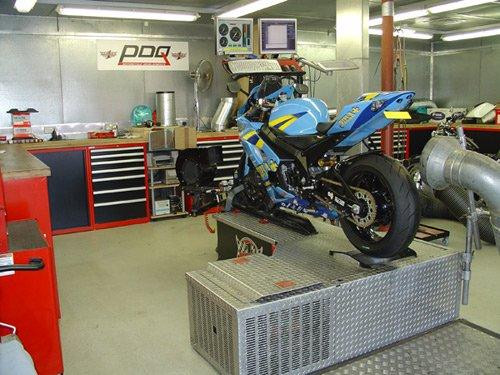What IS A Dynamometer And How Does IT Work?
A dynamometer, or "dyno" for short, is a device for estimating power, a preview of urge (force), or power. For example, the power made by an engine, motor, or other turning central player can be figured by meanwhile estimating force and rotational speed (rpm).
A dynamometer can moreover be used to conclude the force and power expected to work a decided machine, for instance, a siphon. In light of everything, motoring is used to drive a dynamometer. A dynamometer that is planned to be driven is called ingestion or an unapproachable dynamometer. A dynamometer that can either drive or hold is known as a comprehensive or dynamic dynamometer.
Despite being used to conclude the force or power credits of a machine under test (MUT), dynamometers are used in different various parts. In standard surges testing cycles, for instance, those portrayed by the US Environmental Protection Agency (US EPA), dynamometers are used to give reproduced road stacking of either the engine (using an engine dynamometer) or full powertrain (using a suspension dynamometer).
In all honesty, past direct power and force assessments, dynamometers can be used as a part of a testbed for a collection of engine headway works out, for instance, the change of engine organization regulators, bare essential assessments concerning start lead and tribology.
In an engine dynamometer, the water stream, compared with the sought-after associated load, makes impenetrability to the engine. A controlled watercourse through the narrows complex is facilitated at the point of convergence of the rotor in each ingestion region. This water is then expelled to the outer dynamometer body by outward oblige.

As it is composed outward, the water is enlivened into pockets on the fixed stator plates where it is decelerated. The steady accelerating and deceleration make the dynamometer ingest the power conveyed by the engine. Through this trade of essentialness, the water is warmed and delivered.
An indispensable portion of a dynamometer is its data-getting system. The structure is ordinarily contained two units, a Commander and a Workstation, related by an Ethernet interface. The Commander, a work area PC worked by Windows-based programming, issues summons to the Workstation, a touch-screen worked unit housed in an extremely present-day niche. The Workstation works the precision burden and chokes control structures, accumulates the data, and sends it to the Commander to be ready, set aside, and examined.
The Workstation's flourishing, and thusly the data acquiring system's precision, depends on its ability to actually measure data in the dynamometer tests. Imperative to these assessments is the precision of its weight transducers, which measure wind stream in the confirmation complex, oil weight, and other fluid loads. The executive is busy with different loads of fluids so having the capacity of getting assorted loads while running the engine is fundamental.
AccuSense Model ASM
An unrivaled weight transducer, for instance, the AccuSense Model ASM is expected because of its ability to measure unequivocally in extreme circumstances. It can endure mechanical stagger and vibration, warm daze, disintegration, and various limits found in unforgiving testing states of dynamometers. One more favored stance is its flexibility.
For More Info:-
Comments
Post a Comment